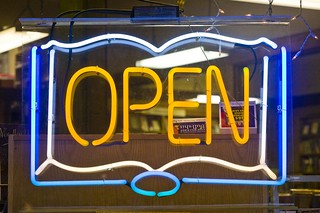 It has taken 20 years, but we finally can celebrate Public Domain Day by welcoming works that are no longer restricted by copyright into our shared cultural heritage. The Sonny Bono Copyright Extension Act of 1998 scooped up two decades-worth of material about to enter the public domain and shoved it back under copyright protection, largely to satisfy a few rightsholders – corporation and estates of dead writers and artists – who controlled profitable works. Disney, which has made an entertainment empire largely from exploiting works in the public domain, was a force behind the 1998 extension, which is why it’s often known as the Mickey Mouse Protection Act. Disney seems to have changed its mind, seeing fan art as a positive for their brand and heavy-handed legislation as an unpopular move.
It has taken 20 years, but we finally can celebrate Public Domain Day by welcoming works that are no longer restricted by copyright into our shared cultural heritage. The Sonny Bono Copyright Extension Act of 1998 scooped up two decades-worth of material about to enter the public domain and shoved it back under copyright protection, largely to satisfy a few rightsholders – corporation and estates of dead writers and artists – who controlled profitable works. Disney, which has made an entertainment empire largely from exploiting works in the public domain, was a force behind the 1998 extension, which is why it’s often known as the Mickey Mouse Protection Act. Disney seems to have changed its mind, seeing fan art as a positive for their brand and heavy-handed legislation as an unpopular move.
The 1998 law was only the most recent extension of copyright. In its original form it lasted 14 years, with an option to renew for another 14 years. Thanks to extensions and changes to procedure that mean things are copyrighted automatically, no registration required, a large portion of our culture is locked up. This is counter-productive. Most copyrighted works aren’t profitable decades after publication. Duke University’s informative Center for the Study of the Public Domain estimates “only 2 percent of works between 55 and 75 years old continue to retain commercial value. For the other 98% of works, no one benefits from continued copyright protection, while the entire public loses the ability to adapt, transform, preserve, digitize, republish, and otherwise make new and valuable uses of these forgotten works.” Anyone who has tried to seek permission to quote extensively from a work or include a photo or image in a publication knows the research can be a rabbit hole; after a few decades many works become “orphaned” – it’s not clear who owns the rights, if anyone does, but making a mistake could lead to a fine of up to $150,000 per infringement. Talk about a chilling effect.
While most of 20th century culture remains locked up or in an uncertain state, it’s worth celebrating that we’re reached the end of our latest rollback period. A year’s worth of culture is now available for remixing and reuse, and more should become available annually. Works entering the public domain this week include
- Safety Last (Harold Lloyd’s classic silent film)
- Ten Commandments (Cecil B. DeMille’s epic film)
- “Yes, We Have No Bananas” Music and lyrics
- A Lost Lady by Willa Cather
- New Hampshire an anthology of poems, many classic, by Robert Frost
- The Ego and the Id by Sigmund Freud
- The Prophet by Kahlil Gibran
- Whose Body? by Dorothy L. Sayers
- Cane by Jean Toomer
- A Son at the Front by Edith Warton
- The Inimitable Jeeves by P.G. Wodehouse
- Jacob’s Room by Virginia Woolf
You can browse a longer list of works from 1923 at Hathi Trust – some 53,000 of them! And get ready to celebrate next new year’s day when 1924 joins the public domain.
photo courtesy of Thomas Hawk, CC-BY-NC
Leave a Reply
You must be logged in to post a comment.